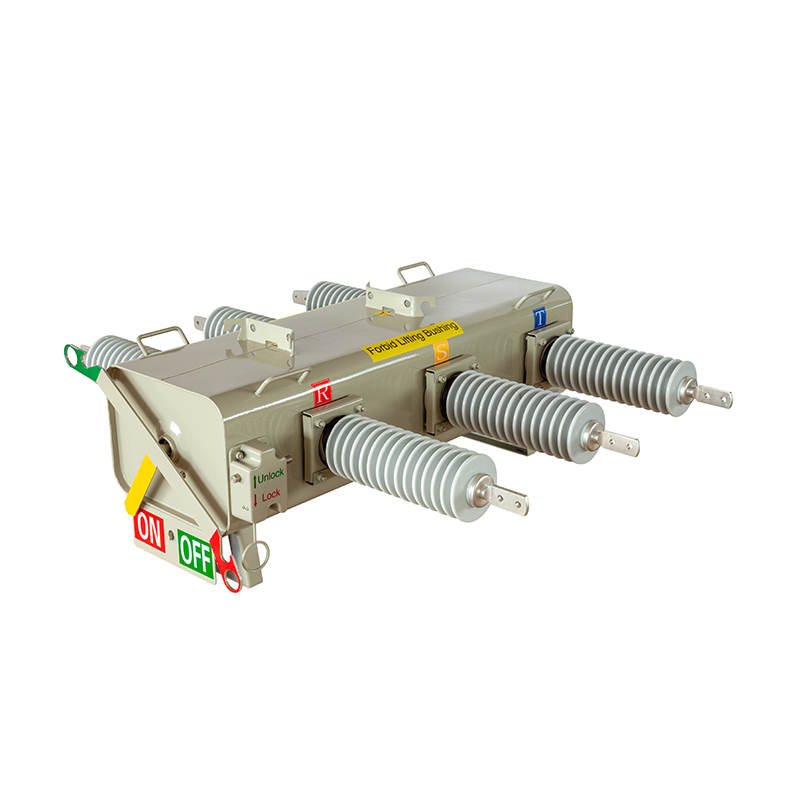The Evolution of Load Break Switches in the Age of Artificial Intelligence
Introduction
The advent of artificial intelligence (AI) has catalyzed transformative changes across industries, from healthcare to manufacturing. In the power distribution sector, critical components like load break switches (LBS) are undergoing a paradigm shift as AI-driven technologies redefine their design, operation, and integration into modern grids. Traditionally, LBS devices have served as mechanical workhorses for isolating circuits, interrupting load currents, and ensuring safety during maintenance. However, the convergence of AI, IoT, and advanced analytics is reshaping their role from passive hardware to intelligent nodes within self-optimizing energy ecosystems. This article explores how AI is driving innovation in load break switch technology, focusing on predictive maintenance, adaptive control, cybersecurity, and their evolving role in smart grids.
1. AI-Enhanced Predictive Maintenance
1.1 From Reactive to Proactive Operations
Traditional maintenance schedules for LBS rely on fixed intervals or post-failure diagnostics, leading to unnecessary downtime or catastrophic failures. AI-powered predictive maintenance leverages machine learning (ML) algorithms to analyze real-time data from embedded sensors (e.g., thermal imaging, vibration analysis, partial discharge detection). For example:
Thermal Anomaly Detection: AI models trained on historical temperature profiles can identify abnormal heating patterns caused by loose contacts or corrosion, triggering alerts weeks before failure.
Acoustic Signature Analysis: Edge-computing devices equipped with microphones detect subtle changes in arcing sounds during switching operations, flagging mechanical wear in early stages.
1.2 Digital Twin Integration
Digital twins—virtual replicas of physical LBS units—simulate performance under varying loads and environmental conditions. By feeding operational data into these models, utilities can:
Predict insulation degradation rates.
Optimize lubrication cycles for moving parts.
Simulate failure scenarios to refine emergency protocols.
Case Study: Siemens’ Sensegear platform combines IoT-enabled LBS units with digital twins, reducing unplanned outages by 40% in pilot projects across European grids.
2. Intelligent Switching Algorithms
2.1 Dynamic Load Management
In renewable-rich grids, fluctuating generation from solar/wind demands real-time adjustments. AI-enhanced LBS can autonomously:
Balance Phase Loads: ML algorithms analyze consumption patterns to redistribute loads, minimizing transformer stress.
Islanding Detection: Neural networks distinguish between grid outages and temporary voltage dips, enabling faster microgrid formation.
2.2 Adaptive Arc Suppression
Switching inductive loads (e.g., transformers) generates arcs that degrade contacts. AI-driven LBS employ:
Reinforcement Learning (RL): Optimize contact separation speed and timing to minimize arcing energy.
Material Science Integration: AI recommends contact alloys (e.g., silver-tungsten composites) based on local humidity and load profiles.
3. Cybersecurity in AI-Driven LBS
3.1 Threat Landscape
As LBS become IP-connected, they face risks like:
False data injection attacks manipulating sensor readings.
Ransomware locking operators out of critical switches.
3.2 AI-Powered Defense Mechanisms
Anomaly Detection: Unsupervised learning models (e.g., autoencoders) baseline normal network traffic, flagging suspicious command patterns.
Blockchain Authentication: Decentralized ledgers validate firmware updates, preventing unauthorized code injection.
Example: ABB’s Secure LBS suite uses federated learning to share threat intelligence across devices without exposing sensitive grid data.
4. Role in Next-Gen Smart Grids
4.1 Grid Self-Healing Capabilities
AI-enabled LBS collaborate with reclosers and sectionalizers to:
Automatically isolate faulted segments (e.g., tree-downed lines).
Reroute power via mesh networks, slashing outage durations.
4.2 Demand Response Optimization
By interfacing with smart meters and DERs (distributed energy resources), LBS act as decision nodes:
Shed non-critical loads during peak demand.
Prioritize EV charging stations based on real-time tariffs.
5. Challenges and Future Directions
5.1 Technical Hurdles
Data Quality: Sparse labeled datasets for rare failure modes hinder ML accuracy.
Edge Computing Limits: Complex models require optimized algorithms for low-power LBS controllers.
5.2 Regulatory and Workforce Gaps
Standardization: Lack of unified protocols for AI-LBS interoperability.
Skill Gaps: Utility engineers need training in AI/ML diagnostics.
5.3 Emerging Innovations
Quantum Machine Learning: Accelerating fault prediction models.
Self-Reconfiguring LBS: Modular designs allowing AI to modify contact arrangements for new load types (e.g., hydrogen electrolyzers).
Conclusion
The fusion of AI and load break switch technology is not merely an incremental upgrade but a reimagining of grid resilience. As LBS evolve into cognitive agents capable of learning, adapting, and defending, they will form the backbone of decentralized, renewable-centric power systems. Utilities that embrace this shift—investing in AI talent, cybersecurity, and interoperable standards—will lead the transition to a sustainable energy future. The next decade will witness LBS transcending their electromechanical roots, emerging as indispensable enablers of the AI-powered grid.
Relate Products
Relatenews
- The Application of Load Break Switches in the Robotics Industry 2025-02-28 10:38:00
- The Application of Load Break Switches in the Photovoltaic Industry 2025-02-28 10:36:00
- The Evolution of Load Break Switches in the Age of Artificial Intelligence 2025-02-28 10:30:00
- Load Break Switches: Working Principles and Operational Guidelines 2025-02-27 17:43:00





